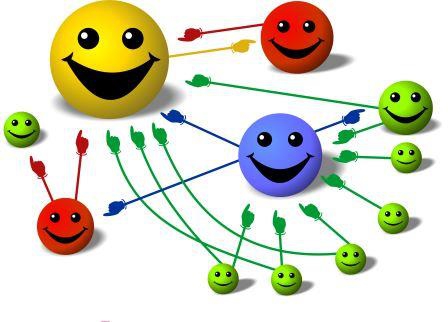Effective internal communication is critical to organisational well-being.
You might have the most progressive and sagacious vision for the growth and development of your organisation. But, unless it is effectively communicated to each one of your employees, the chances of it coming to life are meek. Improper and ineffective internal communication is the cause behind several unrealised objectives of organisations. Unfortunately, today while organisations pay lavish and often unbridled attention to the needs of external communication—including marketing and public relations—many fail to give due attention to internal communication.
A tool to align different departments
Internal communication within a corporate organisation is important for its cohesive functioning and ensuring transparency across multiple departments. Lack of coordination and internal information deficit can be a major source of internal friction and embarrassment for an organisation. No company can succeed if its various departments don’t work in tandem with uniform objectives and vision. Imagine an organisation’s marketing and manufacturing departments chasing different objectives due to lack of effective information flow! How will the marketing team ever pitch products or services it does not know inside out? Having effective internal communication processes and channels in place is the only way to ensure seamless functioning of different departments towards common shared goals.
A tool to improve HR practices
Internal communication doesn’t just serve to bring different departments in unison. It also works to bind employees to their organisation. Consciously and purposefully designed communication is the bedrock of every good human resource management practice. Even the most employee-friendly policies may fail to have a desirable impact unless all employees are educated about them and their benefits. Unless you communicate effectively to your employees that you care for their well-being, and are equally open to receiving their feedback, your human resource management is incomplete. A two-way flow of communication is absolutely crucial to ensure employee well-being.
Let’s take a small but relevant example of the need for a two-way information flow in an organisation. If you start a special late-night cab service for women employees, with the intention of providing them safe transport, you need to consult the employees before setting up the service. It is pointless to set cabs for departure at 9.30 pm when the work stretches up to 10 pm!
A tool to celebrate and motivate employees
In a large, multi-location organisation, how do employees get to know about individual and team achievements in different pockets? This is another area where internal communication comes into play. Internal communication channels should be leveraged to appreciate and recognise achievers. This creates a culture of appreciation and celebration within the organisation. Important organisational milestones and leadership messaging should also be driven through such channels.
A tool to invite ideas and solve problems
With technology improving communication radically, it is today possible to engage a large number of employees in solving issues and generating ideas that can help an organisation thrive. Establishing an internal communication platform, such as the intranet can be a great way to encourage employees, to collaborate for idea generation and problem solving.
Internal communication plays a vital role in helping employees understand the values and priorities of the organisation. It equips them with the knowledge they need to do their jobs and stay connected within the organisation.
(The author is VP-HR, Sun Life Financial Asia Service Centre, India.)
Value our content... contribute towards our growth. Even a small contribution a month would be of great help for us.
Since eight years, we have been serving the industry through daily news and stories. Our content is free for all and we plan to keep it that way.
Support HRKatha. Pay Here (All it takes is a minute)





































It’s not just ‘formal’ communications that are important.
The casual conversations we have with our work mates is the glue that keeps us together. Knowing that *I* like making bread gives me something in common with ANYONE else who makes bread. THAT connection makes them human to me – makes me more understanding.
You see this when you work in virtual teams and that casual interaction is MISSING… IF you’re interested? I go into this a lot deeper in a presentation on Virtual Teams… https://vimeo.com/71039805
Very well articulated by Mr. Rajeev. Yes. It is true that the internal communication paves the way for smooth transition. Employee must know for what purpose she/he is hired and to which objective s/he has to achieve. On the other hand, organization must know from the employees about their career aspirations and create opportunities for them